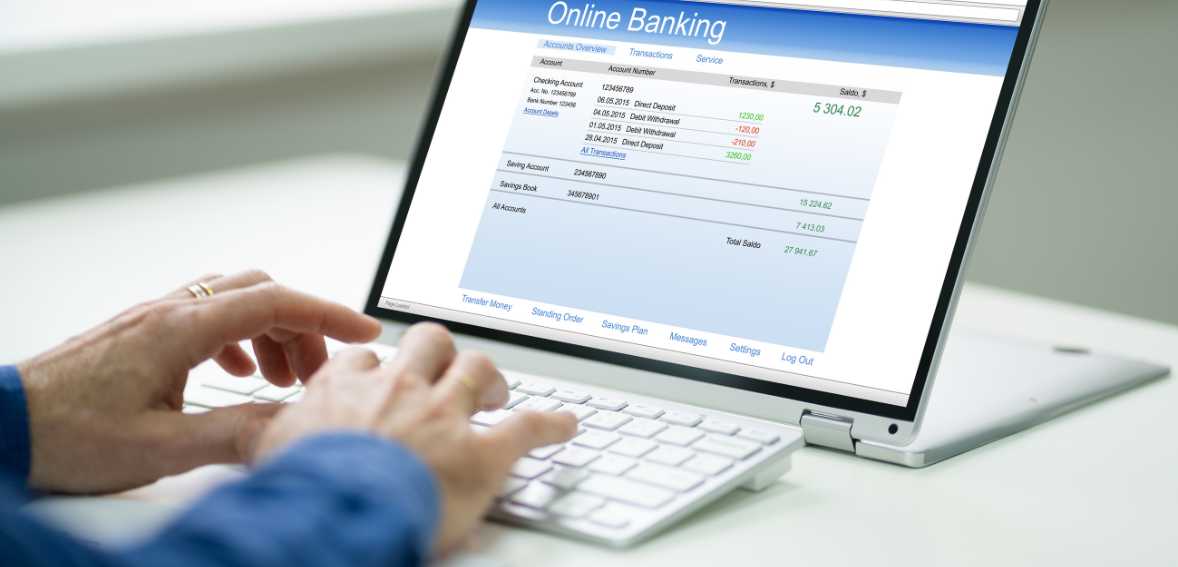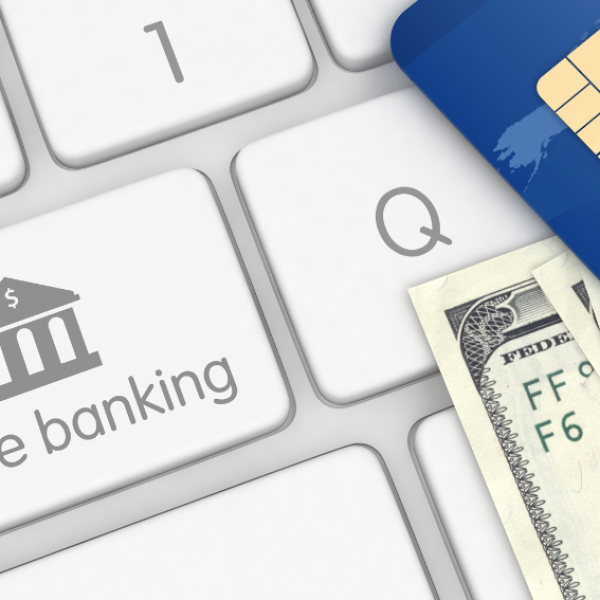In the age of digital transformation, businesses across industries are increasingly reliant on data to drive operations, make decisions, and interact with customers. While data provides immense value, it also comes with a critical responsibility: ensuring data security. Tokenization has emerged as a powerful technique for safeguarding sensitive information by replacing it with unique tokens that have no exploitable value.
This method has become a staple in data protection strategies for industries like finance, healthcare, and e-commerce. This article explores how tokenization works, its benefits, and why it is essential for modern businesses focused on data security.
In This Article
ToggleWhat Is Tokenization?
Tokenization is a security process that replaces sensitive data with non-sensitive substitutes, called tokens. These tokens are random sequences of characters or numbers that carry no inherent or exploitable value. Originally developed to secure credit card information, tokenization has evolved to protect a variety of sensitive data types, such as social security numbers, health records, and banking details.
Unlike encryption—which uses complex algorithms to scramble data—tokenization replaces the actual data entirely with a random string, making it useless if intercepted by unauthorized parties.
For example, in a business setting, tokenization might be used to secure a customer’s credit card number. Rather than storing the actual credit card number, the system generates a token (like “XT49F9B2A1”) to represent it. The original data remains securely stored in a highly protected database known as a “token vault,” accessible only through authorized systems.
If a hacker were to intercept the token, it would hold no usable information on its own and would be impossible to reverse-engineer without access to the vault.
This approach to data security is highly effective because even if a tokenized data set is breached, there is little to no risk to the original data. Tokenization is therefore widely adopted across industries, especially in those handling sensitive information such as healthcare, finance, retail, and government.
How Does Tokenization Work?

Tokenization involves several stages, each designed to secure sensitive data by substituting it with tokens while maintaining accessibility only for authorized users. Here’s a detailed look at each stage of tokenization:
- Identifying Sensitive Data: The first step in tokenization is to identify which pieces of data are sensitive and require protection. In the financial industry, for example, credit card numbers, bank account information, and CVVs are considered highly sensitive. In healthcare, patient identifiers, medical history, and insurance details are classified as sensitive. Businesses assess their data to determine which elements, if exposed, could lead to identity theft, financial loss, or reputational damage.
This step is critical to ensuring that only the necessary data is tokenized, as tokenizing all data could lead to inefficiencies without added security benefits. - Generating Tokens: Once sensitive data is identified, a unique token is generated for each data element. This token is a random, unique string that bears no connection to the original data. For example, the credit card number “1234 5678 9012 3456” might be replaced with a token like “XT49F9B2A1.”
Each token is distinct, and the process of generating these tokens occurs in a secure tokenization system that maintains a strict separation between the token and the original data.
Some businesses use format-preserving tokenization, where the token retains the same length and format as the original data, to ensure compatibility with existing systems. - Storing the Original Data Securely: The actual sensitive data is then securely stored in a “token vault” or secure database, separate from other business systems. This vault is highly protected and stores the mapping between tokens and the original data. Only specific, authorized systems or personnel can access the data within the vault.
This token vault serves as the central repository for sensitive data, ensuring that tokens are only used as representations without providing access to the original information.
Token Use and Retrieval: During daily transactions, only the token is used in place of the sensitive data. For example, when processing a credit card transaction, the token is passed through the system instead of the actual credit card number. When authorized personnel or systems need to retrieve the original data, they use the token as a reference to access it from the secure vault.
This ensures that sensitive data is only accessed when absolutely necessary and only by those with the appropriate permissions.
Benefits of Tokenization for Businesses
Tokenization offers significant advantages to businesses across various industries, particularly those handling sensitive or high-risk data. Below are some of the primary benefits:
Enhanced Data Security
Tokenization provides a higher level of data security by replacing sensitive information with tokens that are useless to unauthorized individuals. Since these tokens cannot be decrypted or reversed to reveal the original data, the risk of a data breach is significantly reduced.
Unlike encryption, which relies on a decryption key that could potentially be compromised, tokenization offers a unique approach by eliminating the sensitive data from systems where it could be accessed by unauthorized parties.
For instance, if a hacker gains access to tokenized payment information, they will only see tokens, which cannot be used to perform fraudulent transactions.
This enhanced security is particularly beneficial for industries dealing with high-value data, such as finance, healthcare, and retail.
Simplified Compliance
Tokenization is invaluable in helping businesses comply with industry regulations, especially those with strict data protection requirements. In industries such as finance and healthcare, businesses are mandated to meet standards like the Payment Card Industry Data Security Standard (PCI DSS) and the Health Insurance Portability and Accountability Act (HIPAA). These standards often dictate that businesses protect sensitive data using stringent security protocols.
Tokenization simplifies compliance by reducing the scope of sensitive data stored within business systems, as tokens are not classified as sensitive information.
For instance, under PCI DSS, a business using tokenization can reduce the number of systems in scope for PCI audits, leading to lower compliance costs and simpler audits. By meeting compliance requirements, businesses not only avoid regulatory penalties but also enhance their reputation for data security.
Improved Customer Trust
With data breaches making headlines frequently, customers are increasingly aware of the risks associated with sharing their personal information. By implementing tokenization, businesses demonstrate a proactive approach to data security, showing customers that they prioritize the protection of their information.
This commitment to security can significantly improve customer trust, which is crucial for brand loyalty and customer retention. For example, a customer shopping online at a retailer that uses tokenization can feel more confident knowing that their payment details are replaced with secure tokens.
This added layer of protection can make customers more likely to complete transactions and become repeat shoppers, which is valuable for customer satisfaction and business growth.
Reduced Operational Risks
Data breaches come with high costs, including legal fees, financial penalties, reputational damage, and potential lawsuits. Tokenization minimizes these risks by reducing the exposure of sensitive data, thereby lessening the potential impact of a data breach. In the event of a breach, tokenized data limits the vulnerability to sensitive information, allowing businesses to contain the situation more effectively and mitigate potential damages.
For instance, if a cyber-attack compromises a business’s payment processing system, the tokenized data accessed would not pose a direct threat. As a result, the business faces fewer liabilities and reduced impact, both legally and financially.
Examples of Tokenization in Practice Tokenization is widely used across various sectors, each leveraging it for specific needs. Here are some examples:
- Finance: Tokenization is extensively used in payment processing to secure credit card transactions. Credit card numbers are tokenized, allowing businesses to conduct transactions without storing sensitive payment information on their systems. Popular mobile payment services like Apple Pay and Google Pay rely heavily on tokenization for secure transactions.
- Healthcare: Tokenization helps healthcare organizations protect patient data by replacing personal identifiers with tokens. This ensures patient confidentiality while still allowing authorized healthcare professionals to access necessary medical information.
- E-commerce: Tokenization is essential for e-commerce platforms, which handle large volumes of transactions daily. By tokenizing payment details, online retailers can protect customer information while improving transaction security.
- Government: Tokenization is used by government agencies to protect personal data, such as social security numbers and tax records. Tokenization ensures that sensitive data is safeguarded from unauthorized access while still being accessible to authorized personnel when needed.
Tokenization vs. Encryption

While both tokenization and encryption serve to protect data, they operate differently:
- Encryption: Encryption transforms data using algorithms, creating an encrypted version of the original information that can be reverted to its original form using a decryption key. This method provides security but can be vulnerable if the decryption key is compromised.
- Tokenization: Tokenization, on the other hand, replaces data with tokens that have no mathematical link to the original information, making them practically impossible to reverse-engineer. The original data is stored in a secure vault and only accessible through the token.
Together, tokenization and encryption can provide layered security, with each method addressing specific security needs for businesses handling sensitive data.
Types of Tokenization
Tokenization methods are tailored to meet varying data security requirements, technological constraints, and compliance standards across industries. Selecting the appropriate type of tokenization can significantly impact the security, scalability, and integration of a business’s data management processes. Here are the primary types of tokenization:
Vault-Based Tokenization
Vault-based tokenization, also known as centralized tokenization, is the most traditional and secure form of tokenization. In this method, the system replaces sensitive data with a token and stores the original data in a secure repository known as a token vault.
The vault acts as a high-security database that only authorized systems can access, ensuring that even if tokens are exposed, the sensitive information remains protected in the vault.
- Advantages: Vault-based tokenization is highly secure because access to sensitive data is tightly controlled. Only those with authorized permissions can access the vault, making it nearly impossible for unauthorized parties to retrieve sensitive data.
- Challenges: This method can become challenging to scale as businesses grow. With each new transaction, data is added to the vault, which requires considerable storage, maintenance, and security. As vault size increases, it may affect retrieval times and processing efficiency.
- Example Use Case: Financial institutions frequently use vault-based tokenization to protect customer credit card numbers, as these need high-security storage and quick retrieval capabilities for authorized transactions.
Vaultless Tokenization
Vaultless tokenization, also called distributed tokenization, replaces sensitive data with tokens without relying on a centralized vault to store the original data. Instead, the system generates tokens based on algorithms, allowing tokens to be recreated as needed without storing the original data. This design facilitates faster processing and is easier to scale, as there’s no need to manage a large, central database.
- Advantages: Vaultless tokenization is ideal for applications that require quick processing times and high scalability. Without a vault, the method reduces storage and retrieval complexity, which is valuable in industries where large-scale, high-frequency transactions occur.
- Challenges: Although it simplifies scaling, vaultless tokenization may be less secure than vault-based methods. The lack of a centralized vault can limit the security controls that some high-risk data might require, making it suitable mainly for less-sensitive data or scenarios where high-speed processing is prioritized.
- Example Use Case: Retail environments with high transaction volumes, such as e-commerce platforms, may use vaultless tokenization for product data or other less-sensitive information to enhance processing efficiency.
Format-Preserving Tokenization (FPT)
Format-preserving tokenization generates tokens that retain the same format, length, and structure as the original data. This means that sensitive information, like credit card numbers or social security numbers, can be replaced with tokens that match their format exactly. Format-preserving tokens are valuable when integrating with systems that require data to meet specific character limits or data types, allowing for seamless compatibility with legacy or third-party systems.
- Advantages: FPT is beneficial for environments where integration is critical, and the token must fit existing data structures without any alterations to database schemas or application code. This reduces implementation complexity and is especially useful when working with systems that cannot be easily modified.
- Challenges: While convenient, format-preserving tokenization may require additional security protocols since tokens could appear like real data, potentially creating a target for attackers if exposed. Balancing ease of use with robust security measures is crucial when implementing FPT.
- Example Use Case: Format-preserving tokenization is commonly applied in healthcare and finance, where patient IDs, account numbers, and other critical data elements need to align with existing database formats for regulatory and practical purposes.
Key Factors for Implementing Tokenization in Your Business
Implementing tokenization effectively requires a strategic approach that takes into account the specific data, technological environment, and security needs of your organization. Here are some essential factors to consider when incorporating tokenization:
- Data Sensitivity: Determining which data elements require tokenization is a foundational step in planning a secure and efficient tokenization strategy. Highly sensitive data, such as financial information, personally identifiable information (PII), and health records, should be prioritized for tokenization to prevent unauthorized access and data breaches.
- Best Practices: Conduct a data sensitivity assessment to classify data elements based on risk levels. Critical information that could lead to identity theft, financial loss, or reputational damage if exposed should be tokenized, while low-risk data may not require tokenization.
- Example: A healthcare provider might decide to tokenize patient identifiers and insurance details while leaving general medical information without tokenization.
- Example: A healthcare provider might decide to tokenize patient identifiers and insurance details while leaving general medical information without tokenization.
- Scalability Needs: Businesses, especially those experiencing rapid growth or high transaction volumes, need a tokenization solution that can scale effectively. Tokenization systems vary in their scalability, with vault-based solutions often requiring more extensive infrastructure as they expand, while vaultless solutions can be scaled more efficiently.
- Best Practices: Evaluate your expected data volume and transaction rate. For companies anticipating fast growth, a vaultless solution might be more practical, while companies with moderate data growth might benefit from the added security of a vault-based system.
- Example: An e-commerce platform with a global customer base might choose a vaultless system to handle rapid growth and avoid latency issues during peak shopping periods.
- Example: An e-commerce platform with a global customer base might choose a vaultless system to handle rapid growth and avoid latency issues during peak shopping periods.
- Compliance Requirements: Different industries are governed by specific compliance standards, which outline requirements for handling and storing sensitive data. Industries like finance, healthcare, and retail face stringent regulations such as PCI DSS (for payment data), HIPAA (for healthcare information), and GDPR (for customer data privacy). Tokenization can be a powerful tool in achieving compliance by reducing the scope of sensitive data stored and ensuring adherence to regulatory standards.
- Best Practices: Consult compliance guidelines to understand how tokenization can align your business with regulatory standards. Choose tokenization providers that demonstrate compliance with relevant certifications to simplify the compliance process.
- Example: A retailer handling credit card information would need a PCI DSS-compliant tokenization solution to minimize liability in the event of a breach and comply with payment industry regulations.
- Example: A retailer handling credit card information would need a PCI DSS-compliant tokenization solution to minimize liability in the event of a breach and comply with payment industry regulations.
- Integration with Existing Systems: Seamless integration with existing business applications, databases, and payment systems is vital to avoid disruptions and maintain operational efficiency. Tokenization solutions should be compatible with the business’s current technology stack to reduce deployment time, training requirements, and potential downtime.
- Best Practices: Work closely with your IT team to ensure that your chosen tokenization solution integrates smoothly with customer relationship management (CRM) systems, databases, and any other technology that handles sensitive data. Format-preserving tokenization is especially beneficial if your systems require specific data structures.
- Example: A bank implementing tokenization for customer data should ensure that the tokenized data can be easily utilized by customer support software and other internal tools without requiring complex modifications.
- Example: A bank implementing tokenization for customer data should ensure that the tokenized data can be easily utilized by customer support software and other internal tools without requiring complex modifications.
- User Experience: User experience should be a key consideration when implementing tokenization. A well-implemented tokenization solution should protect sensitive data without adding friction to the customer experience. If transactions or data access become overly cumbersome, it may affect customer satisfaction and lead to increased abandonment rates.
- Best Practices: Test the tokenized transaction process from the user’s perspective to identify any potential pain points. Ensure that the tokenized data flows smoothly across systems, and maintain the speed and efficiency of transactions to foster a positive user experience.
- Example: An online retailer that uses tokenized payment processing should ensure that the checkout process remains as quick and seamless as before, without adding any unnecessary steps that could cause customer frustration.
By addressing these key factors, businesses can implement tokenization in a way that aligns with their operational goals, compliance requirements, and security standards, ensuring both data protection and business continuity.
Popular Tokenization Solutions and Providers

Here are some popular tokenization providers and their offerings:
- Visa Token Service: Provides tokenization for mobile and online payments, enabling secure card transactions across digital platforms.
- Mastercard Digital Enablement Service (MDES): A comprehensive tokenization solution for secure payments through various digital channels.
- TokenEx: Offers customizable, cloud-based tokenization for PCI compliance and data security across various industries.
- Thales Tokenization Solutions: Provides vault-based and vaultless tokenization options tailored to healthcare, finance, and retail.
Future Trends in Tokenization
Tokenization continues to evolve as technology advances. Here are some anticipated trends:
- Tokenization and Blockchain: Blockchain can enhance tokenization by storing and tracking tokens across distributed networks. This combination provides a highly secure way of storing tokenized data with complete traceability.
- AI-Driven Tokenization: Artificial intelligence can help identify sensitive data across systems more efficiently, streamlining tokenization and improving accuracy.
- Expanding into New Industries: Beyond finance and healthcare, tokenization is gaining traction in industries such as entertainment, where it can protect user identities and digital rights.
Conclusion
Tokenization offers a reliable way to protect sensitive information without sacrificing functionality or user experience. By substituting sensitive data with non-sensitive tokens, businesses can reduce the risk of data theft, simplify regulatory compliance, and strengthen customer trust.
As tokenization technology advances, it will continue to play an essential role in data security for modern businesses. Implementing tokenization allows businesses to focus on growth, secure in the knowledge that their data protection framework is strong, flexible, and future-ready.
For organizations seeking to elevate their data security, tokenization stands out as an invaluable investment that aligns with the evolving demands of digital privacy and security.
Frequently Asked Questions
What is tokenization, and how does it protect data?
Tokenization replaces sensitive data with unique, meaningless tokens. These tokens refer back to the original data stored securely in a token vault, reducing exposure in case of a breach.
What are the main types of tokenization?
Tokenization types include vault-based (stores tokens in a secure vault), vaultless (no central vault, easier to scale), and format-preserving (maintains original data structure).
Why should businesses use tokenization?
Tokenization enhances security, simplifies regulatory compliance, builds customer trust, and reduces risks associated with data breaches and fraud.










